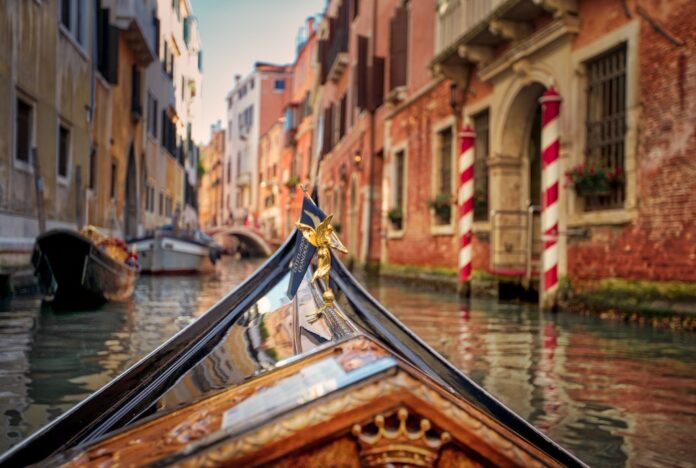My dear readers, some links on this site pay us referral fees for sending business and sales. We value your time and money and will not waste it. For our complete advertising policy, click here. The content on this page is not provided by any companies mentioned, and has not been reviewed, approved or otherwise endorsed by these entities. Opinions expressed here are the author’s alone.
Venice, Italy has added a tourism tax, joining heavily visited cities around the world, but it won’t stop over tourism.
If you are considering booking travel or signing up for a new credit card please click here. Both support LiveAndLetsFly.com.
If you haven’t followed us on Facebook or Instagram, add us today.
Venice Adds Tourist Tax
In an effort to protect residents of the city of Venice and the unique ecosystem, the City Council has voted to implement a tourist tax from January 1st, 2023. The fee is designed to target more than 90% of visitors and will be variable based on occupancy.
“Day-trippers will have to sign up online the day they plan to visit and pay a fee ranging from 3 euros to 10 euros per person, depending on the time of year and how crowded the city is, the AP reported. Those who don’t pay the tax will risk a fine up to 300 euros (or $315).
Children under 6 will be exempt from the fee. Overnight visitors who book a hotel stay will also be exempt as they already pay a €5 ($5.33) per night tax.” – Travel & Leisure
Interestingly, the northern Italy city will charge via a website but as the city has no gates but may ask visitors for proof of their payment. Other Italian cities have added the tax through hotels but this will be unique as it is only incurred through the website and requires visitors to be both informed and diligent if they want to visit Venice.
Overtourism Is A Real Concern, Especially In Venice
Amsterdam charges a similar fee but added a flat €3/day on top of a 7% tax at hotels. The European Tourism Association (ETOA) analyzed these growing fees across the continent:
“The ETOA reported that tourism taxes within Europe were growing with only nine out of 28 EU member states – many of them in Northern Europe – not charging tourism taxes. These were: Cyprus, Denmark, Estonia, Finland, Ireland, Latvia, Luxembourg, Sweden and the UK.” – HotelManagement.net
The rich history of Venice, the charm of its water taxis, the Bridge of Sighs, and the bell towers are an annual draw for nearly 20 million visitors from around the world. Unlike other destinations, the island built on silt is buoyed by man-made elevation systems designed to fight the acqua alta (high water, tide) of the Venetian Lagoon. This leads to frequent floods in Piazza San Marco (and St. Mark’s Basilica) and a general sense that any trip to Venice could be the last to see it as it was.
To be clear, the island isn’t sinking because of overtourism, but it’s not helping. Millions of visitors to the small island put a strain on other resources too, as visitors outnumber residents 2:1.
More effective measures can be found in Bhutan, which charge visitors to the tiny mountainous nation $200-250/day. The Galapagos require a costlylicensed tour guide. Maya Bay (featured in the film, The Beach) has been closed to visitors for some time.
The negative effects of overtourism are real. They can include environmental degradation, elevated costs for locals, and damage to infratructure and assets. It can also lead to damage to the image of the destination for those who find crowding, extensive waits, and a generally unpleasant visiting experience.
Tourism Taxes Don’t Work
Adding a €3-10 fee to enter Venice will not deter North Americans from flying 4,000-7,000 miles with designs on St. Marco Square. Likewise, Japanese tourists traveling still further, aren’t going to miss an opportunity to see the Serene city. Amsterdam added a similar tax years ago, €8/day for visitors was tacked on to cruise arrivals. But on a cruise priced between $2,500-4,500/person, who is going to notice €8 and further, would it be enough to exclude Amsterdam itineraries?
Of course, not.
If tourist numbers are not reduced by these fees, then they are either too low or don’t serve the purpose. So why have them? I trust that it’s become abundantly clear that these cities are seizing on the perfect opportunity. They enjoy the image of doing something for the citizenry, it’s environmentally conscious (fewer tourists, less waste, fewer carbon emissions spent) but most importantly, deeper pockets. After all, who keeps the tourism tax money? It’s not returned to the citizens, though some of it might make its way back in the form of expanded municipal benefits.
Looking at Amsterdam, and its effectiveness, the same link used above states that Amsterdam expects growth to continue to increase by 50% by 2030 despite the fees.
Conclusion
Venice, Italy is adding a tourist tax but it’s unlikely to have a positive effect on Piazza Di San Marco. Tourism taxes rarely work unless they are sufficiently high, but they are good at raising revenue for the municipality that may or may not be spent to actually reduce tourism. In the case of Venice’s tourism tax, it’s specifically encumbersome on the tourist to be educated that it exists, how to pay and demonstrate that it’s been paid, and then enforced by Venetian officials. It seems even less likely to succeed than other attempts.
What do you think? Are tourism taxes a suffient model to deter tourists? In Venice’s specific model, do you think this will help battle overtourism?










